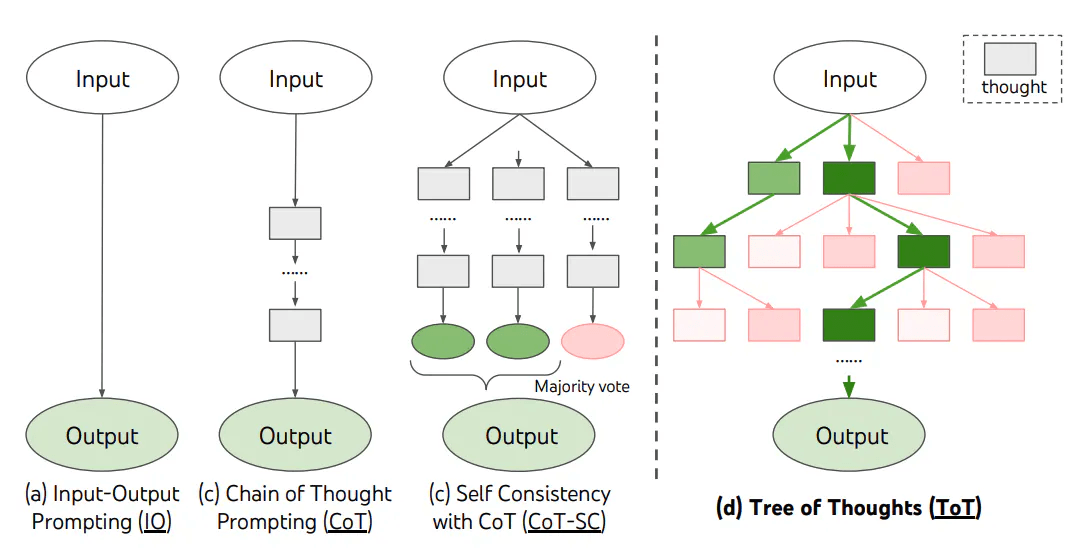All blogs
Let's Learn About GenAI - Part 3: A Deep Dive into Prompts and their Functional Classifications

In our previous GenAI adventure, we explored the foundations of AI, GenAI, and LLMs, uncovering the magic behind their inner workings. We also dove into the world of prompts, categorizing them based on their informational structures.
Now, prepare to level up your prompt game as we embark on a thrilling quest to classify prompts by their functionality. This exciting new perspective will unlock a treasure trove of practical use cases, empowering you to wield GenAI's capabilities like a seasoned pro.
Instructional Prompts: Your AI's Personal Assistant
When you need the AI to perform a specific task, instructional prompts are your go-to. These prompts are like clear directives, telling the AI exactly what you want it to do. Think of them as clear, concise commands that leave no room for confusion. They often start with action verbs, setting the tone for the expected output.
When to use them:
Instructional prompts are the foundation of effective AI communication. They empower you to take control and guide your AI towards the precise output you desire.
Conversational Prompts: The AI That Chats Back
If you want to have a natural, flowing conversation with the AI, conversational prompts are the way to go. These prompts encourage back-and-forth interaction, allowing you to explore topics in depth or simply have a casual chat.
Example:
Conversational prompts transform your AI interactions from one-way commands into lively conversations.
Contextual Prompts: Paint the Perfect Picture for Your AI
Sometimes, the AI needs a bit of background to fully understand your request. Contextual prompts provide that crucial context, specifying the AI's role, your intent, or any specific constraints. You can also include examples to illustrate the desired output.
Example:
Contextual prompts empower you to fine-tune your AI's output, ensuring it's perfectly aligned with your goals.
Creative Prompts: Ignite Your Imagination
These prompts trigger the model to generate original content or ideas, such as writing a poem, creating a story, or brainstorming solutions to a problem. These types of creative prompts often have keywords that open the way for the model’s creativity and may require multiple refinements and iterations to achieve the desired outcome. Through the model’s responses, we will be more likely to “think outside the box.”
Example:
Creative prompts are your gateway to a world of endless possibilities.
Factual Prompts: Your AI's Encyclopedia
Need a quick fact check or a deep dive into a specific topic? Factual prompts are your direct line to the vast knowledge your AI has absorbed. It's like having a walking encyclopedia at your disposal, ready to answer your questions with precision and accuracy.
For example, querying information about historical events, scientific concepts, or quizzes. Technically, this type of prompt will exploit the knowledge that the model has learned in the pre-training phase and provide it back to the user.
Example:
Step-by-Step Prompts: Your AI's Trusty Guide
From cooking a delicious meal to building a complex software application, step-by-step prompts are your go-to tool for achieving any goal. Craft prompts that elicit detailed instructions, ensuring your AI model understands your needs and delivers results that exceed expectations. Whether you're a beginner or an expert, step-by-step prompts empower you to communicate effectively with AI and unlock its full potential."
Example:
Opinion-Based Prompts: Exploring Perspectives
This type of prompt asks the model to give an opinion, point of view, or suggestion on a certain topic. While AI doesn't have personal beliefs, it can synthesize information to present diverse viewpoints on any topic you desire.
Example:
Systematic Prompts: Organizing Information
These prompts are designed to guide the model to generate responses that adhere to a specific structure, format, or pattern. For instance, they can be used to create a list of topics, outline an essay or presentation, or systematically analyze a given topic. Essentially, these prompts encourage the model to organize and present information in a clear and logical way. While creating these types of prompts isn't particularly challenging, they can yield incredibly useful results because:
Example:
Prompt 1: List 5 benefits of regular exercise and briefly explain why each benefit is important
Prompt 2: You are a nutritionist. Write an 800-word blog post about the Mediterranean diet. Your post should include the following sections:
Chain-of-Thought (CoT) Prompts: The AI's Thoughtful Detective
This is a type of chain prompting, where a series of inputs and outputs are connected together. The technique uses the model's own output as a prompt for the LLM to get the next result. This prompting technique is used to solve complex problems, such as multi-step tasks, or to ensure continuity in conversations with the model. CoT is often used to explore a topic in detail, requiring a vision of the 'expected result'. This allows you to evaluate the AI's response to see if it's satisfactory and what details to delve into next.
Example:
You are looking for a new laptop. You have narrowed your choices down to two models:
Model A: Price $1500, Intel Core i5 processor, 8GB RAM, 256GB SSD, 14-inch Full HD screen.
Model B: Price $1800, Intel Core i7 processor, 16GB RAM, 512GB SSD, 15.6-inch Full HD screen.
You are wondering which model to choose. Consider and include the following factors in your answer:
Tree of Thought (ToT) Prompts: Your AI's Brainstorming Powerhouse
This is a cutting-edge prompting technique for communicating with LLMs. Instead of generating a single, direct response to a question or problem, this type of prompt encourages the LLM to explore multiple solutions, much like a tree branching out. The LLM generates potential "thoughts," then evaluates the usefulness of each thought. This process is repeated multiple times, with the model refining and improving its thoughts based on the evaluation results.
This technique can be used to solve complex problems that require multiple steps of reasoning or creativity. It also increases accuracy by exploring multiple solutions, allowing the model to find better and more accurate answers. This is currently the most advanced technique, showcasing the incredible potential of LLMs in problem-solving.

Example: Wanting to ask about which major I should study to have good job opportunities in the future?
Traditional prompt: give a list of occupations that are predicted to be in high demand in the future, such as information technology, healthcare, renewable energy, etc.
Prompt ToT:
Prompt 1: Imagine three different experts answering this question. All experts will write down 1 step of their thinking, then share it with the group. All experts will then move on to the next step, and so on. If any expert realizes they are wrong on any point, they will leave. Please create a marketing plan for my online shoe store.
Prompt 2: Each expert, please give me 2 specific strategies at each suggested step.
Prompt 3: ...
Moving forward, it's clear that our experts are delving deeper into the marketing plan, providing more detailed descriptions of each step in the process. To continue this exploration, we can simply repeat the prompt or ask a specific expert to elaborate on a particular aspect that we're interested in.
Potential next steps:
Conclusion
This article has provided a comprehensive overview of different prompt types and how to utilize them for effective interaction with Large Language Models (LLMs). From simple instructions to advanced techniques like Tree of Thought, mastering the art of prompt engineering will empower you to harness the full potential of AI.
Ready to elevate your AI utilization to new heights?
At Diaflow, we are led by experts hailing from world-leading tech giants such as Google and Booking.com... We possess a deep understanding of AI and the expertise to apply it creatively and effectively.
Contact us today to learn more about Diaflow's personalized AI solutions, designed to address your unique business challenges.
Don't miss the opportunity to revolutionize your business with the power of AI. Let Diaflow help you turn potential into reality!



